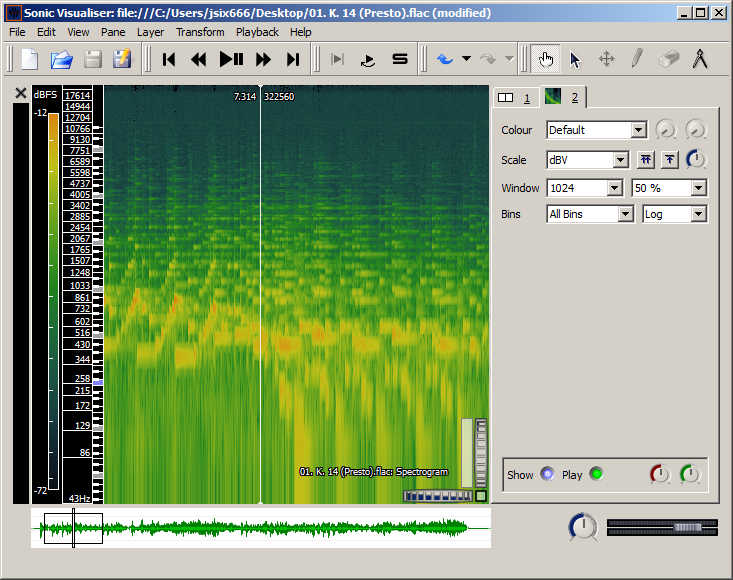

Sonic Visualiser is pervasively multithreaded, loves multiprocessor and multicore systems, and can make good use of fast processors with plenty of memory. Even if you have to wait for your results to be calculated, you should be able to do something else with the audio data while you wait. In this respect, Sonic Visualiser aims to resemble a consumer audio application.

The user interface should be simpler to learn and to explain than the internal data structures. To facilitate ready comparisons between different kinds of data, for example by making it easy to overlay one set of data on another, or display the same data in more than one way at the same time. To provide the best available core waveform and spectrogram audio visualisations for use with substantial files of music audio data. The design goals for Sonic Visualiser are: Time-stretch playback, slowing right down or speeding up to a tiny fraction or huge multiple of the original speed while retaining a synchronised display.Įxport audio regions and annotation layers to external files. Select areas of interest, optionally snapping to nearby feature locations, and audition individual and comparative selections in seamless loops.
SONIC VISUALISER PITCH PLUS
Play back the audio plus synthesised annotations, taking care to synchronise playback with display. Import note data from MIDI files, view it alongside other frequency scales, and play it with the original audio. Import annotation layers from various text file formats. Run feature-extraction plugins to calculate annotations automatically, using algorithms such as beat trackers, pitch detectors and so on. View the same data at multiple time resolutions simultaneously (for close-up and overview). Overlay annotations on top of one another with aligned scales, and overlay annotations on top of waveform or spectrogram views. Look at audio visualisations such as spectrogram views, with interactive adjustment of display parameters.Īnnotate audio data by adding labelled time points and defining segments, point values and curves. Load audio files in WAV, Ogg and MP3 formats, and view their waveforms. Sonic Visualiser contains features for the following:
SONIC VISUALISER PITCH MANUAL
The aim of Sonic Visualiser is to be the first program you reach for when want to study a musical recording rather than simply listen to it.Īs well as a number of features designed to make exploring audio data as revealing as possible, Sonic Visualiser also has powerful annotation capabilities to help describe what you find, and the ability to run automated annotation and analysis plugins.įeatures include sophisticated spectrogram views multi-resolution waveform and data displays manual annotation of time points and curves measurement capabilities from spectrogram and spectrum playback at any speed looping and playback of discontiguous selections ability to apply standard audio effects and compare the results with their inputs and support for onset detection, beat tracking, structural segmentation, key estimation and many other automated feature extraction algorithms via Vamp audio analysis plugins. Sonic Visualiser is an application for viewing and analysing the contents of music audio files.

Sonic Visualiser by Centre for Digital Music at Queen Mary, University of London has been updated to v3.2.1.


 0 kommentar(er)
0 kommentar(er)
